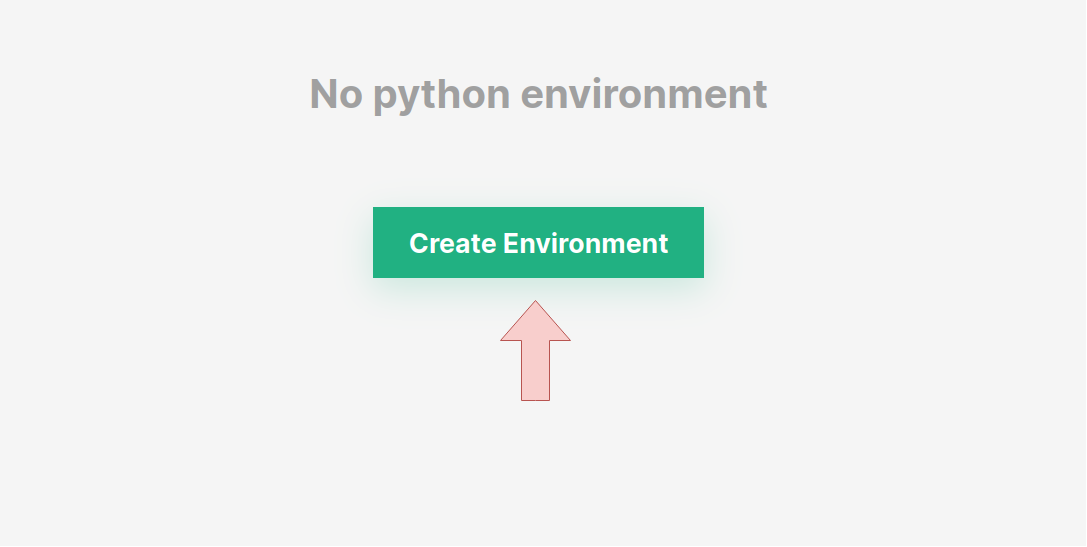Python environment#
Hopsworks comes out of the box with a Python environment for data engineering, machine learning and more general data science development.
There is one Python environment for each project. A library installed in the project's Python environment can be used in a Job or Jupyter notebook (Python or PySpark) run in the project.
The environment ensures compatibility between the CUDA version and the installed TensorFlow and PyTorch versions for applications using NVIDIA GPUs.
Navigating to the service#
Managing the project's Python environment is provided as a service on Hopsworks and can be found in the Python libraries page under the Project settings menu.

When a project is created, the python 3.8 environment is automatically enabled. So no additional steps are required to start developing your machine learning application.
Listing installed libraries#
The list of installed libraries is displayed on the page. It is possible to filter based on the name and package manager to search for a particular library.

Installing libraries#
Python packages can be installed from the following sources:
- PyPi, using pip package manager
- A conda channel, using conda package manager
- Packages saved in certain file formats, currently we support .whl or .egg
- A public or private git repository
- A requirements.txt file to install multiple libraries at the same time using pip
- An environment.yml file to install multiple libraries at the same time using conda and pip
Install by name and version#
Enter the name and, optionally, the desired version to install.
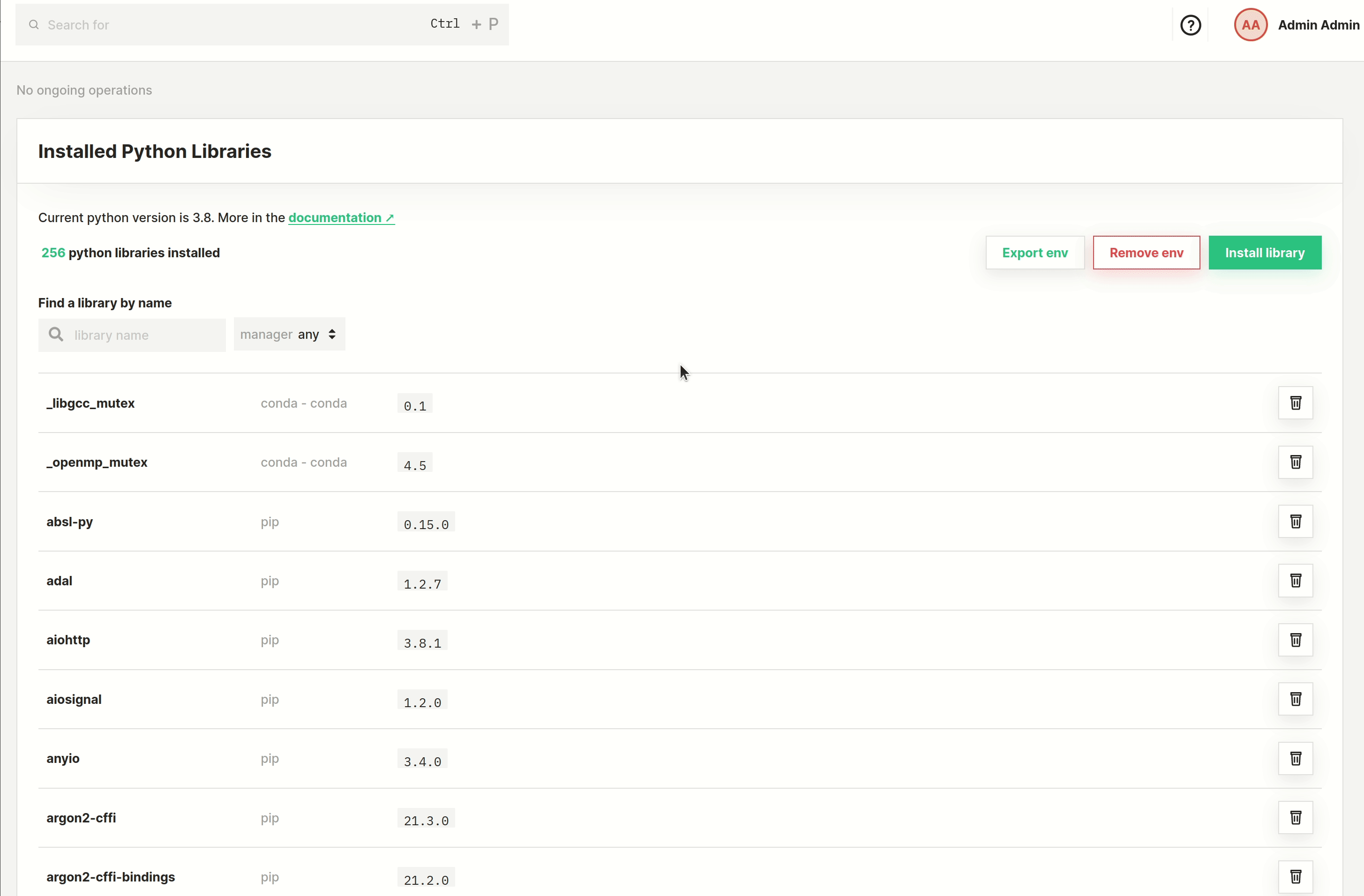
Search and install#
Enter the search term and select a library and version to install.
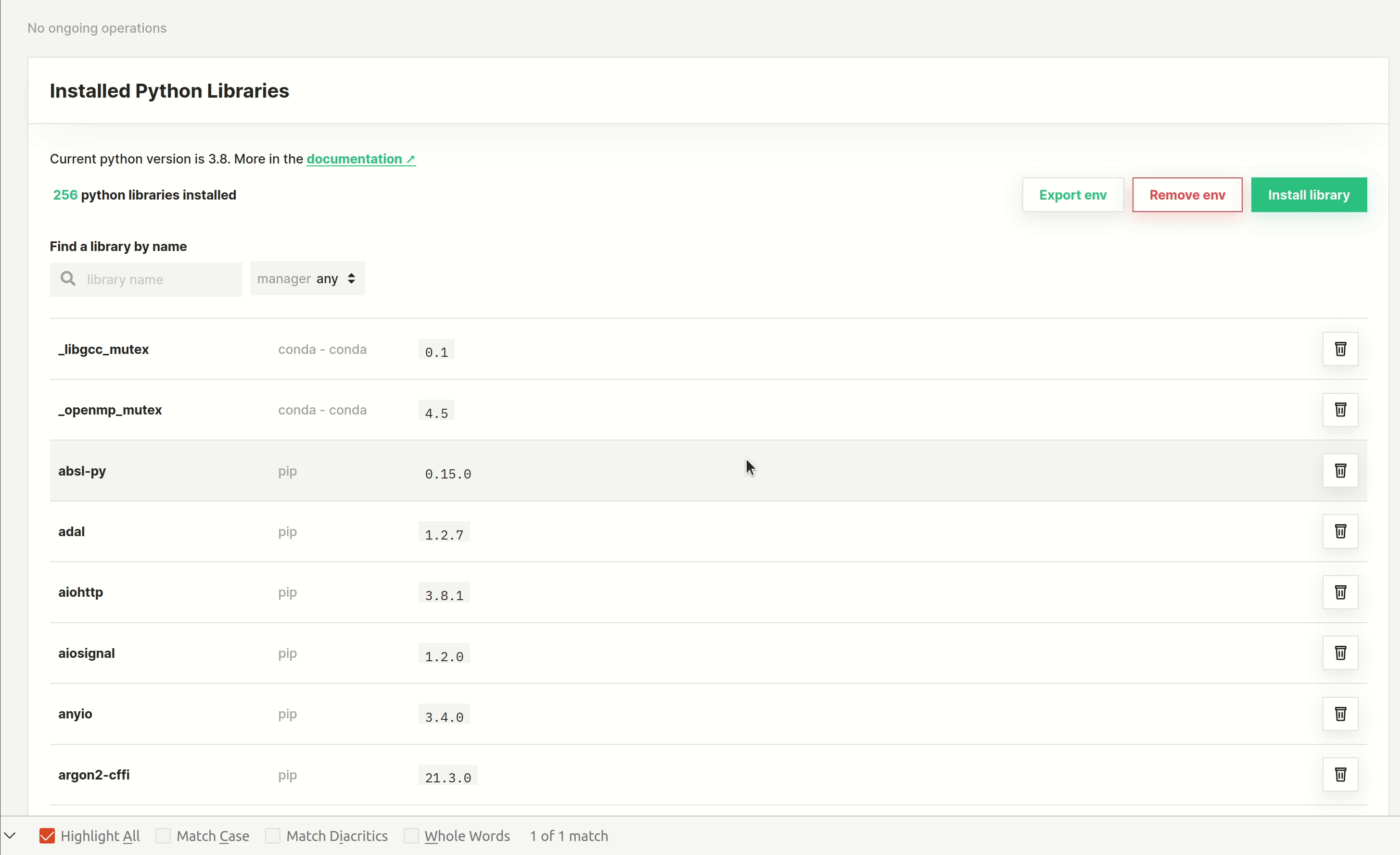
Install from package file#
Install a python package by uploading the corresponding package file and selecting it in the file browser.
Currently supported formats include:
- .whl
- .egg
- requirements.txt
- environment.yml
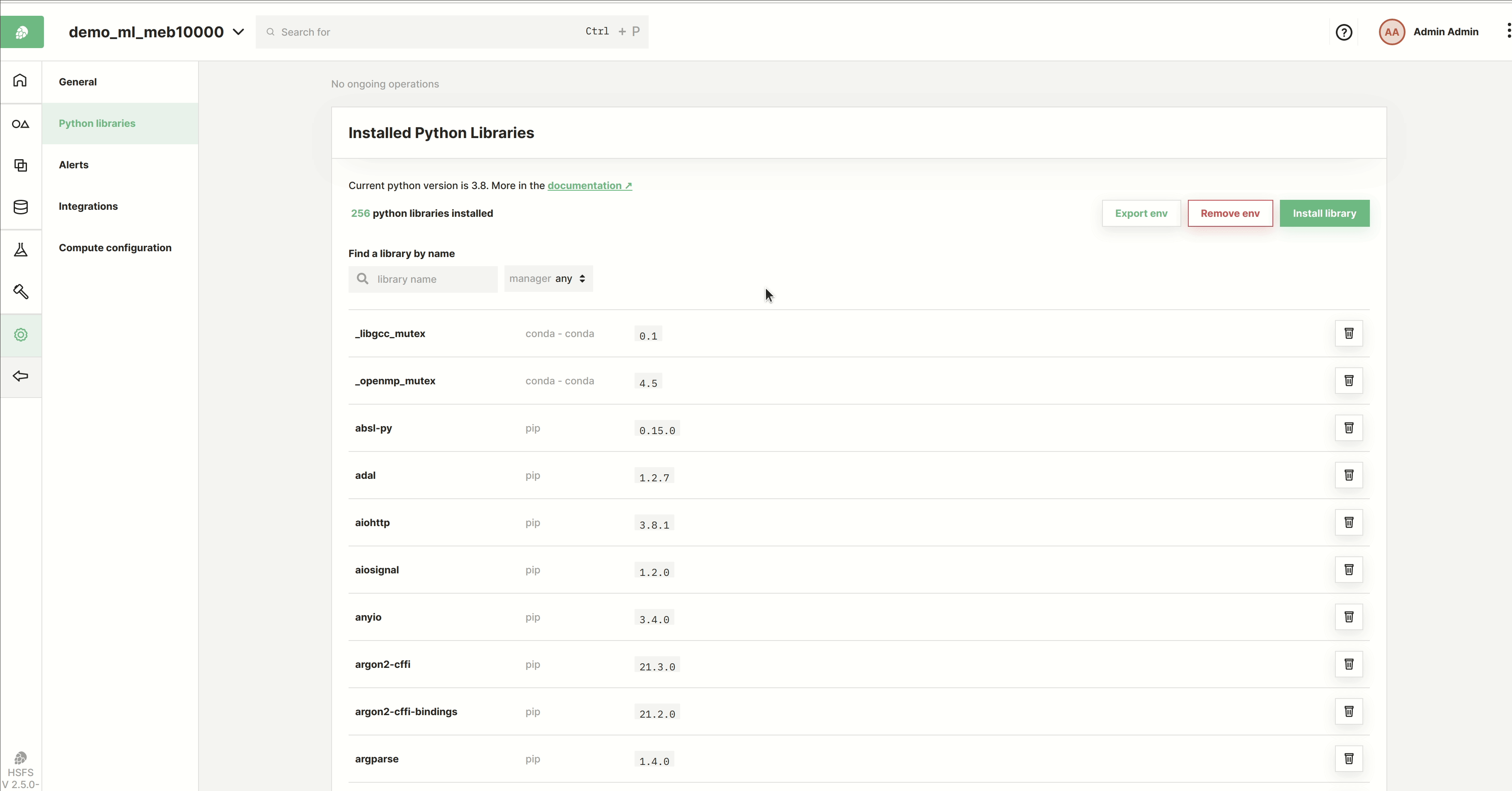
Install from .git repository#
To install from a git repository simply provide the repository URL. The URL you should provide is the same as you would enter on the command line using pip install git+{repo_url}.
In the case of a private git repository, also select whether it is a GitHub or GitLab repository and the preconfigured access token for the repository.
Note: If you are installing from a git repository which is not GitHub or GitLab simply supply the access token in the URL. Keep in mind that in this case the access token may be visible in logs for other users in the same project to see.
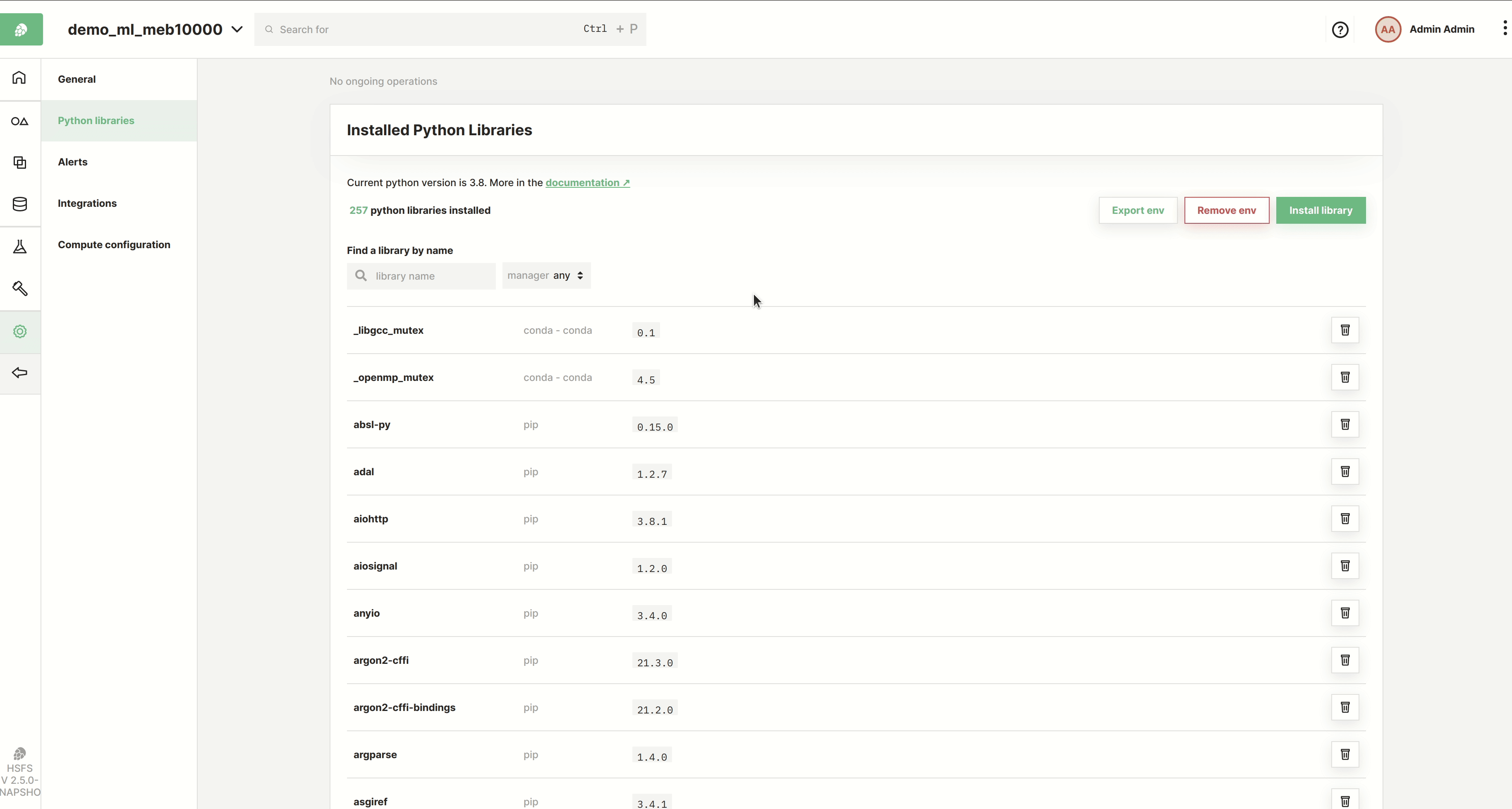
Uninstalling libraries#
To uninstall a library, find the library in the list of installed libararies tab and click the trash icon to remove the library.

Debugging the environment#
After each installation or uninstall of a library, the environment is analyzed to detect libraries that may not work properly. In order to do so we use the pip check tool, which is able to identify missing dependencies or if a dependency is installed with the incorrect version.
The alert will automatically show if such an issue was found.

Exporting an environment#
An existing Anaconda environment can be exported as a yml file, clicking the Export env will download the environment.yml file in your browser.

Recreating the environment#
Sometimes it may be desirable to recreate the environment to start from the default project environment. In order to do that, first click Remove env.

After removing the environment, simply recreate it by clicking Create Environment.
